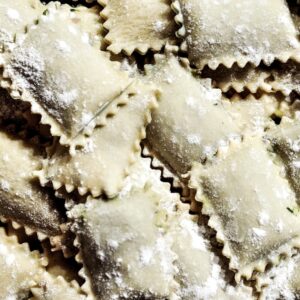Quetzalcoatl, also known as the Feathered Serpent, is a prominent deity in Mesoamerican mythology. According to legend, Quetzalcoatl was one of the most important gods in the Aztec pantheon, associated with wind, air, and learning. He was often depicted as a feathered serpent, with vibrant plumage and a sinuous body. Quetzalcoatl was believed to have created humanity and taught them the arts of civilization, including agriculture, writing, and the calendar. He was also associated with Venus, the morning star, and was considered a bringer of light and knowledge.
In Aztec mythology, Quetzalcoatl was also known for his tragic departure from the mortal realm. According to legend, he was tricked by his rival Tezcatlipoca into getting drunk and committing incest, which led to his exile. Quetzalcoatl then sailed away on a raft of serpents, promising to return one day to reclaim his kingdom. This departure was often interpreted as a metaphor for the cycles of life and death, with Quetzalcoatl representing the eternal struggle between light and darkness. The mythology of Quetzalcoatl has captivated people for centuries, inspiring art, literature, and spiritual practices across Mesoamerica and beyond.
Key Takeaways
- Quetzalcoatl is a prominent deity in Mesoamerican mythology, often associated with creation, knowledge, and the wind.
- In Mesoamerican culture, Quetzalcoatl symbolizes the duality of life and death, as well as the cycles of nature and the cosmos.
- Quetzalcoatl continues to be a significant figure in modern society, representing wisdom, knowledge, and the preservation of ancient traditions.
- A Quetzalcoatl tattoo can hold spiritual and mystical meanings, symbolizing protection, guidance, and the balance of opposing forces.
- The artistic representation of Quetzalcoatl in tattoos often showcases the feathered serpent in vibrant colors and intricate designs, reflecting its cultural significance and beauty.
The Symbolism of Quetzalcoatl in Mesoamerican Culture
In Mesoamerican culture, Quetzalcoatl symbolized a wide range of concepts and values. As the Feathered Serpent, he represented the duality of nature, embodying both the earthly realm (the serpent) and the celestial realm (the quetzal bird). This duality was seen as a reflection of the interconnectedness of all things, as well as the balance between opposing forces such as life and death, light and darkness, and order and chaos. Quetzalcoatl was also associated with wisdom, knowledge, and enlightenment, serving as a patron of scholars, priests, and artisans.
Furthermore, Quetzalcoatl was revered as a benevolent deity who brought prosperity and abundance to his followers. He was often depicted as a creator god, responsible for shaping the world and guiding humanity towards a more civilized existence. As a result, Quetzalcoatl was often invoked in rituals and ceremonies related to agriculture, fertility, and the cycles of nature. His association with Venus also linked him to concepts of rebirth and renewal, as the planet’s movements were believed to influence the agricultural calendar. Overall, Quetzalcoatl’s symbolism in Mesoamerican culture reflected a deep reverence for the natural world and a profound understanding of the interconnectedness of all living things.
Quetzalcoatl in Modern Society
Despite being an ancient deity from Mesoamerican mythology, Quetzalcoatl continues to hold significance in modern society. His image and symbolism have been incorporated into various aspects of contemporary culture, from art and literature to popular media and fashion. In Mexico and other parts of Central America, Quetzalcoatl is still revered as a symbol of national identity and cultural heritage. His image can be found in public art installations, murals, and even on currency, serving as a reminder of the rich history and traditions of the region.
Moreover, Quetzalcoatl’s influence extends beyond Mesoamerica, with his mythology inspiring artists, writers, and filmmakers around the world. His iconic depiction as a feathered serpent has been reimagined in countless works of art, from paintings and sculptures to digital illustrations and graphic novels. In popular culture, Quetzalcoatl has appeared in video games, comic books, and television shows, often portrayed as a powerful and enigmatic figure with ties to ancient mysticism and magic. This enduring presence in modern society speaks to the timeless appeal of Quetzalcoatl’s mythology and the enduring impact of Mesoamerican culture on global consciousness.
The Spiritual and Mystical Meanings of a Quetzalcoatl Tattoo
For many people, getting a Quetzalcoatl tattoo holds deep spiritual and mystical significance. The image of the Feathered Serpent is often seen as a symbol of wisdom, knowledge, and enlightenment, making it a popular choice for those seeking to express their connection to ancient traditions and spiritual beliefs. In Mesoamerican culture, tattoos were often used as a form of personal expression and identity, with each design carrying its own unique meanings and associations. A Quetzalcoatl tattoo can serve as a powerful reminder of the interconnectedness of all things and the eternal struggle between light and darkness.
Furthermore, a Quetzalcoatl tattoo can be seen as a form of protection or guidance, invoking the benevolent qualities associated with the deity. Many people believe that wearing the image of Quetzalcoatl on their skin can bring them luck, prosperity, and spiritual insight. The intricate details of the feathered serpent’s form can also be interpreted as a representation of personal growth and transformation, reflecting the cyclical nature of life and the pursuit of higher knowledge. Overall, a Quetzalcoatl tattoo can be a deeply personal and meaningful symbol for those who feel drawn to its spiritual and mystical connotations.
The Artistic Representation of Quetzalcoatl in Tattoos
The artistic representation of Quetzalcoatl in tattoos is as diverse as the mythology that inspired it. From traditional black ink designs to vibrant full-color pieces, Quetzalcoatl tattoos can be found in a wide range of styles and interpretations. Some people choose to depict the Feathered Serpent in a realistic manner, capturing the intricate details of its feathered body and sinuous form. Others opt for a more stylized or abstract approach, incorporating elements of Mesoamerican art and symbolism into their designs.
In addition to the serpent itself, Quetzalcoatl tattoos often feature other elements that hold significance in Mesoamerican culture. These can include symbols of fertility, abundance, or celestial bodies such as the sun or moon. Feathers, flowers, and geometric patterns are also commonly incorporated into Quetzalcoatl tattoos, adding depth and complexity to the overall composition. The choice of placement for a Quetzalcoatl tattoo can also impact its artistic representation, with some people opting for large-scale pieces that cover their entire back or chest, while others prefer smaller designs that can be easily concealed or showcased as desired. Ultimately, the artistic representation of Quetzalcoatl in tattoos reflects the individuality and creativity of each person who chooses to honor this ancient deity through body art.
Embracing Quetzalcoatl as a Symbol of Strength and Wisdom

For many individuals, embracing Quetzalcoatl as a symbol of strength and wisdom is a deeply personal and empowering experience. The Feathered Serpent’s mythology is rich with themes of resilience, knowledge, and transformation, making it an inspiring figure for those seeking guidance on their own spiritual journey. By aligning themselves with the qualities embodied by Quetzalcoatl, people can draw upon his mythical attributes to navigate life’s challenges with grace and determination.
Furthermore, embracing Quetzalcoatl as a symbol of strength and wisdom can serve as a source of cultural pride and connection to one’s heritage. For those with Mesoamerican ancestry or a deep appreciation for indigenous traditions, honoring Quetzalcoatl through art or symbolism can be a way to reclaim and celebrate their cultural identity. By embracing the wisdom of ancient deities like Quetzalcoatl, individuals can find strength in their roots and draw inspiration from the enduring legacy of Mesoamerican culture.
The Cultural Appropriation Debate: Understanding the Responsibility of Getting a Quetzalcoatl Tattoo
As with any form of cultural or religious symbolism, getting a Quetzalcoatl tattoo raises important questions about cultural appropriation and respect for indigenous traditions. It is crucial for individuals considering such tattoos to approach them with sensitivity and awareness of their cultural significance. Understanding the mythology and symbolism behind Quetzalcoatl is essential in order to honor its legacy in an authentic and respectful manner.
Moreover, it is important for those considering a Quetzalcoatl tattoo to engage in meaningful dialogue with members of Mesoamerican communities or indigenous groups who may have personal connections to this deity. By seeking out diverse perspectives and listening to the voices of those directly impacted by cultural appropriation, individuals can gain valuable insights into the ethical considerations surrounding their decision to get a Quetzalcoatl tattoo. Ultimately, approaching this form of body art with humility and an open heart can lead to a deeper understanding of its cultural significance and foster greater respect for indigenous traditions.
In conclusion, the mythology of Quetzalcoatl is deeply rooted in Mesoamerican culture and continues to hold significance in modern society. As a symbol of strength, wisdom, and interconnectedness, Quetzalcoatl inspires individuals to embrace their spiritual journey with grace and resilience. When considering a Quetzalcoatl tattoo, it is important for individuals to approach it with respect for its cultural significance and engage in meaningful dialogue about cultural appropriation. By honoring the legacy of Quetzalcoatl through art and symbolism in an authentic manner, individuals can find empowerment in their connection to ancient traditions while fostering greater respect for indigenous cultures.
Looking to learn more about the cultural significance of Quetzalcoatl tattoos? Check out this insightful article on The Good Sight that delves into the history and symbolism behind these mesmerizing designs. Whether you’re considering getting a Quetzalcoatl tattoo or simply want to understand its deeper meaning, this article is a must-read. The Good Sight offers a comprehensive exploration of this ancient Mesoamerican deity and its representation in contemporary tattoo art.
FAQs
What is a Quetzalcoatl tattoo?
A Quetzalcoatl tattoo is a design that features the Aztec deity Quetzalcoatl, who is often depicted as a feathered serpent. This symbol holds significant cultural and spiritual meaning in Mesoamerican cultures.
What does Quetzalcoatl represent in Mesoamerican culture?
Quetzalcoatl is a prominent deity in Mesoamerican mythology, representing a combination of the serpent and the bird. It is associated with creation, fertility, and the cycle of life and death.
What are common elements in Quetzalcoatl tattoos?
Common elements in Quetzalcoatl tattoos include the feathered serpent, vibrant colors, and intricate geometric patterns. These tattoos often incorporate symbols of power, wisdom, and spirituality.
What is the significance of getting a Quetzalcoatl tattoo?
For many individuals, getting a Quetzalcoatl tattoo is a way to connect with Mesoamerican culture, honor their heritage, or express their admiration for the deity’s symbolism. It can also serve as a symbol of protection and guidance.
Are there any cultural considerations when getting a Quetzalcoatl tattoo?
It is important to approach Quetzalcoatl tattoos with respect for the cultural and spiritual significance they hold in Mesoamerican traditions. It is advisable to research and understand the symbolism and meaning behind the design before getting the tattoo.





